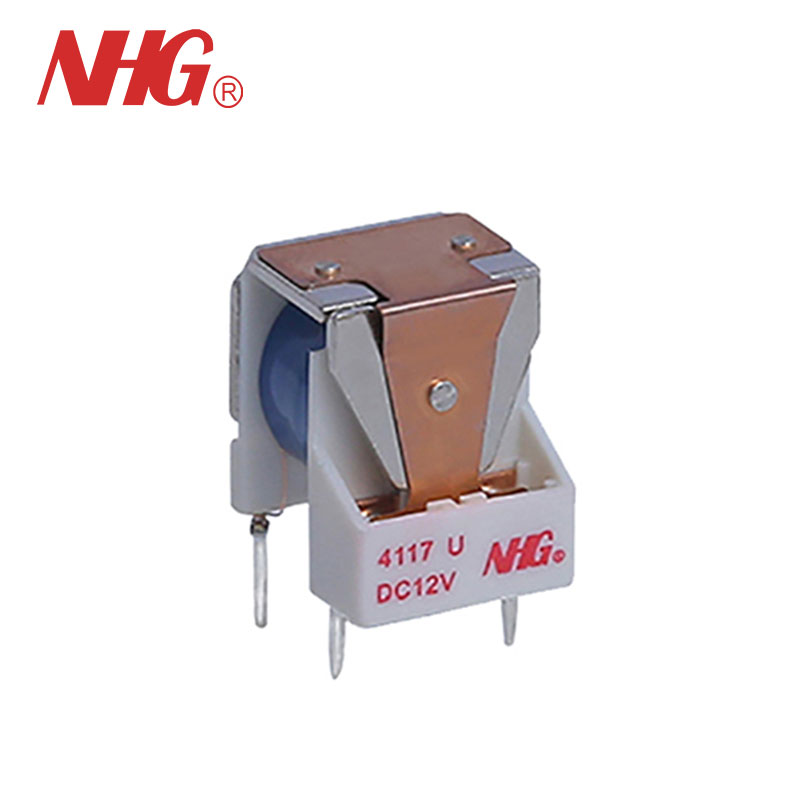Automotive Relays: The Unsung Heroes of Vehicle Electrical Systems
2025-04-17
When you think of a vehicle’s electrical system, it’s easy to focus on the more prominent components, like the battery, alternator, or wiring harnesses. However, there are smaller, but equally crucial components that ensure the smooth operation of these systems. One such component is the automotive relay. Often overlooked, automotive relays play an essential role in managing the flow of electrical energy throughout a vehicle, ensuring that different components function properly.
In this blog, we will explore what automotive relays are, how they work, and why they are so important in modern vehicles.
What is an Automotive Relay?
An automotive relay is an electrically operated switch that controls the flow of current to different parts of a vehicle's electrical system. It acts as an intermediary between high-power circuits (like a motor or light) and the lower-power circuits that control them, such as the vehicle’s control modules or switches.
Relays are typically small, cylindrical devices consisting of a coil, contacts, and an armature. When a small electrical current passes through the coil, it creates a magnetic field that pulls the armature, causing the contacts to either open or close. This action allows a larger current to flow through the high-power circuit, such as activating the headlights, starting the engine, or operating other electrical systems in the vehicle.
How Do Automotive Relays Work?
To better understand how relays work, let’s break down the basic operation:
1. Control Circuit: When you turn on a switch or press a button (such as the ignition switch or the air conditioning control), a small current flows through the relay’s control circuit. This current energizes the coil inside the relay.
2. Magnetic Field Generation: The flow of current through the coil generates a magnetic field, which attracts the armature (a metal piece inside the relay). This movement of the armature causes the relay’s contacts to either open or close.
3. High-Power Circuit Activation: Once the contacts close, the high-power circuit (for instance, the starter motor or the headlights) is activated, allowing a larger current to flow and power the device or system.
4. Deactivation: When the switch is turned off, the current to the coil is cut, and the magnetic field collapses. The armature returns to its original position, opening the contacts and deactivating the high-power circuit.
Types of Automotive Relays
Automotive relays come in various types, each designed for specific functions in a vehicle’s electrical system. Some of the most common types include:
1. Standard Relay: This is the most basic type of relay used in vehicles. It is typically used for simple on/off control of electrical circuits, such as turning on headlights or activating the fuel pump.
2. Cooling Fan Relay: In vehicles with cooling fans, this relay controls the fan’s operation. It ensures that the fan turns on when the engine temperature reaches a certain level and turns off once the engine cools down.
3. Starter Relay: A starter relay controls the current that powers the vehicle’s starter motor. It helps the engine start by providing the necessary electrical current when the ignition key is turned.
4. Horn Relay: This relay is used to control the horn, ensuring that it only sounds when the driver presses the horn button.
5. Power Window Relay: In vehicles with electric windows, the power window relay allows the driver or passenger to control the windows with a button, ensuring that the motors receive the necessary power.
6. Fuel Pump Relay: This relay controls the fuel pump, ensuring that it activates when the engine is running and shuts off when the engine is turned off.
The Importance of Automotive Relays
Automotive relays are essential for several reasons:
1. Efficient Power Distribution: Relays allow low-power circuits to control high-power devices without overloading the vehicle’s wiring. This makes the electrical system more efficient and prevents overheating or damage to sensitive components.
2. Safety: By controlling the flow of electricity to critical systems like the fuel pump and starter motor, relays help ensure that the vehicle runs safely and smoothly. They prevent potential electrical failures, which could result in dangerous situations.
3. Reliability: Automotive relays are built to withstand the harsh conditions inside a vehicle. They are designed to endure extreme temperatures, vibrations, and exposure to moisture, ensuring that the electrical systems operate reliably under all conditions.
4. Protecting Components: Relays protect sensitive components from electrical surges. For example, they act as a safeguard for motors, lights, and other electrical devices by regulating the current that flows to them.
5. Automating Functions: Many vehicle functions, such as power windows, windshield wipers, and air conditioning, rely on relays to automate the operation of these systems. Without relays, these functions would require more complex and less efficient switches.
Common Problems with Automotive Relays
Like any other part of a vehicle, automotive relays can fail over time. Here are some common issues that may arise:
1. Relay Failure: A faulty relay can cause electrical systems to malfunction or not operate at all. For example, if the starter relay fails, the vehicle may not start.
2. Worn Contacts: Over time, the contacts inside the relay can wear down, leading to poor connection and unreliable operation. This can cause electrical devices to flicker, work intermittently, or fail to function completely.
3. Corrosion: Exposure to moisture and humidity can cause the contacts inside the relay to corrode. This can result in poor electrical conductivity and erratic system performance.
4. Overheating: If a relay is overloaded or used inappropriately, it can overheat and cause damage to both the relay and the electrical components it controls.
Conclusion
While automotive relays are small and often overlooked, they are critical components in modern vehicles. They manage the electrical systems in cars, trucks, and other vehicles, ensuring that various functions like starting the engine, powering lights, and operating motors are performed efficiently and safely.
As vehicles become increasingly complex with the addition of more electrical and electronic systems, relays will continue to play an essential role in vehicle functionality. Maintaining and replacing relays when necessary ensures that your vehicle runs smoothly and that its electrical systems are always ready to perform.
By understanding the importance of automotive relays and the role they play in vehicle operation, drivers and mechanics alike can appreciate their contribution to the overall performance and safety of the vehicle.



